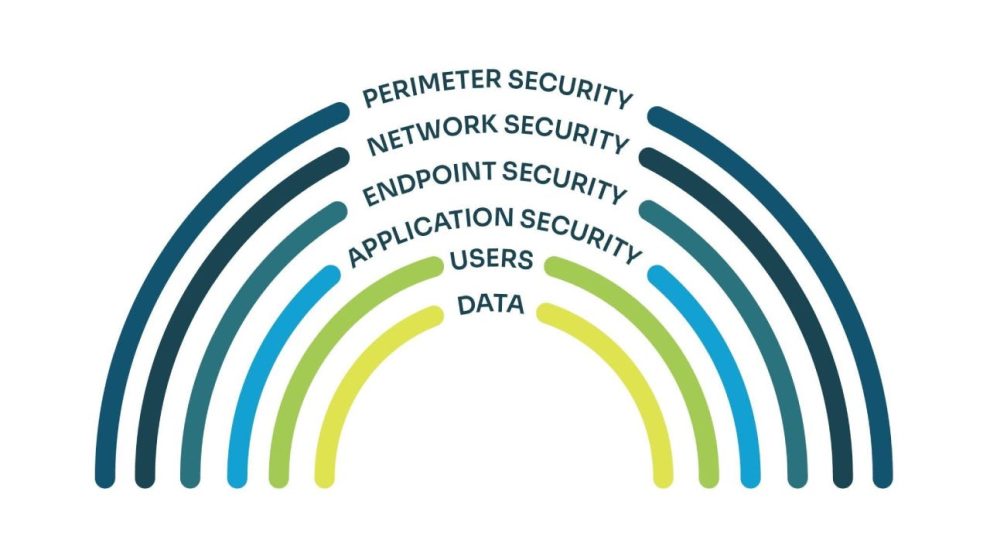In the modern software landscape, where applications are built as intricate ecosystems of interconnected services, APIs (Application Programming Interfaces) act as the vital bridges facilitating communication and data exchange. However, with great connectivity comes great responsibility, and securing these interfaces has become paramount. As API adoption surges, understanding and implementing best practices for API security is no longer optional – it’s essential for protecting your data, users, and reputation.
Why the Increased Focus on API Security?
Several factors are driving the heightened emphasis on API security:
- Evolving Attack Landscape: Cybercriminals are increasingly targeting APIs as easy entry points into complex systems, exploiting vulnerabilities for data theft, manipulation, and denial-of-service attacks.
- The Rise of Microservices: Microservices architecture, while promoting agility, creates a larger attack surface with numerous APIs to defend.
- Openness and Connectivity: APIs often expose sensitive data and functionality, demanding robust security measures to prevent unauthorized access and misuse.
- Shifting Responsibility: With cloud-based APIs becoming commonplace, developers share security responsibility with cloud providers, necessitating clear communication and shared security practices.
Best Practices for Building a Secure API Fortress:
- Authentication and Authorization: Implement strong authentication and authorization mechanisms to ensure only authorized users access APIs and only within permitted boundaries.
- Data Security: Encrypt sensitive data in transit and at rest, employing best practices like tokenization and data masking to minimize risk of exposure.
- Rate Limiting and Throttling: Prevent malicious actors from exploiting your APIs for denial-of-service attacks by implementing rate limiting and throttling mechanisms.
- Input Validation: Sanitize all user input to prevent code injection and other vulnerabilities stemming from untrusted data.
- Logging and Monitoring: Continuously monitor API activity for suspicious behavior and log all transactions for forensic analysis and incident response.
- API Gateways: Utilize API gateways as centralized control points for managing access, security policies, and traffic routing for your APIs.
- Vulnerability Scanning and Penetration Testing: Regularly conduct vulnerability scans and penetration testing to identify and address potential security weaknesses in your APIs.
- Security Updates and Patching: Maintain vigilance in applying security updates and patches promptly to prevent known vulnerabilities from being exploited.
Challenges and Considerations:
- Balancing Security and Openness: Striking the right balance between robust security measures and user-friendly API experiences can be challenging.
- Integration with Existing Systems: Integrating API security solutions with existing development and deployment workflows can require additional effort and planning.
- Keeping Up with Evolving Threats: The security landscape is constantly changing, necessitating continuous adaptation and updates to your API security strategies.
Navigating the Secure API Future:
Securing your APIs is an ongoing journey, not a one-time destination. By embracing best practices, continuously monitoring and improving your security posture, and fostering a culture of security awareness within your development team, you can build a robust defense against ever-evolving threats and ensure the integrity, reliability, and security of your APIs in the interconnected world of microservices and open systems.
Why Strong API Security Matters for Your Business
With over 68% of software integrations and interactions happening through APIs—and this number only rising—APIs increasingly represent the lifeblood of modern digital ecosystems. However, 85% of businesses also report API security issues, highlighting the need for robust protection.
But why is API security so critical for your organization? Here are some key reasons:
Prevent Sensitive Data Exposure
APIs frequently handle sensitive information like customer data, financial records, healthcare data, and intellectual property. Any exposure of this information can result in severe reputational damage, legal penalties, or loss of competitive advantage. Solid API security prevents such unintended leakage.
Guard Against System Compromise
APIs provide direct conduits into critical backend systems and databases. If not adequately secured, they can be exploited to gain unauthorized access to mission-critical resources like servers, networks, applications, or cloud infrastructure. This can enable extensive compromise and damage by attackers.
Defend Against Evolving Cyber Threats
Cybercriminals continuously probe digital systems for any vulnerability. And once identified, even small security gaps in APIs can be used to devastating effect through injection attacks, denial-of-service assaults, or application-layer threats. Up-to-date API security helps counter such zero-day threats.
Maintain Trust and Confidence
If customers or partners lose confidence due to API security incidents like data breaches or downtime from attacks, they may stop engaging with you. For consumer-facing apps, a brand battering from poor API security can especially drive users away. Continuous API hardening is key to sustaining their trust.
Avoid Non-Compliance Fines
Many privacy, financial, healthcare and other regulations like PSD2, GDPR or NIST are placing increasing security onus on APIs handling sensitive data. Insufficient API protection and vulnerabilities leading to incidents of non-compliance can incur heavy monetary penalties.
Implementing API Security in DevOps Pipelines
In modern DevOps-driven application development, building security into the continuous integration and continuous deployment (CI/CD) pipeline is essential for efficiency, speed, and security. API security needs to be tightly integrated into these fast-moving DevOps flows and automation.
Here are some key ways to enable API security in DevOps:
Automated Testing and Validation
Utilize automated API security testing tools within your pipelines to catch vulnerabilities early on. Conduct tests like scanning, code analysis, fuzzing, DAST/SAST scans, and DDoS simulations at every code commit or container build to identify issues proactively.
Policy-Driven API Gateways
Centralize and automate security policy enforcement via an API gateway integrated with your pipeline. Define policies like OAuth, rate limiting, IP allowlisting, bot detection once—and automatically apply across environments and code pushes via infrastructure-as-code.
Continuous Monitoring and Real-time Alerting
Monitor your production APIs continuously via hooks to your CI/CD pipeline’s analytics systems. Track for anomalies in traffic, errors, response times or policy violations. Enable real-time alerting and automatic reactions for security incidents.
Microservices Security Posture Review
Assess the collective security risks across interconnected microservices frequently—especially with rapid updates. API gateways providing graphical microservices maps and risk analysis greatly help accelerate these reviews within pipelines.
Coordinated Responsibility With Cloud Providers
For cloud-native applications, coordinate security responsibilities between your DevOps teams and cloud providers via CI/CD integrations. Address vulnerabilities spanning cloud infrastructure, managed services, and your code systematically.
The Pillars of Effective API Security Architecture
Well-planned API security architecture is essential for sustained protection amidst rapidly evolving apps, APIs, threats and business requirements. Core elements of sound API security architecture include:
Layered Security Across Gateways, Networks and Code
Employ multiple correlated security controls across API gateways, web application firewalls, microservices networks, identity stores, and application code. Create defense-in-depth with capabilities spanning perimeter to deep application logic.
Centralized Policy Management and Governance
Centrally manage and enforce security, availability and operational policies consistently across your distributed APIs. Efficient governance is key for securing complex, hybrid and multi-cloud environments.
Loose Coupling and Isolated Attack Surfaces
Architect microservices with loose coupling and isolate security domains to limit lateral threat movement after perimeter breaches. Compartmentalize access and apply principals of least privilege via strong authentication and authorization.
Security Automation Across CI/CD Pipelines
Deeply integrate security analysis, testing, compliance checks and threat protection into CI/CD pipelines. Automate policy enforcement uniformly across hybrid/multi-cloud environments through infrastructure-as-code integration.
Unified Security Visibility and Analytics
Gain unified visibility into security events, user activity monitoring and risk posture across hybrid environments via centralized analytics. Enable intelligent correlation, automated alerting and one-click remediation.
The Key Role of API Gateways
Within modern API security architecture, API gateways have emerged as a critical control plane. API gateways sit between clients and backend services, acting as centralized policy decision points for access control, threat prevention and operational control across complex, hybrid API ecosystems.
Key API security functions enabled by gateways include:
- Authentication and authorization
- Rate limiting and throttling
- Request validation and sanitization
- Bot detection and mitigation
- Granular access policies
- Centralized security logging and analytics
As key security policy enforcement hubs, the placement of API gateways is also strategic—spanning across on-premise data centers, cloud environments and CDNs. Modern gateways also integrate deeply with identity stores, web application firewalls, microservices meshes and CI/CD pipelines.
The growing sophistication of API gateways makes them indispensable accelerants and force multipliers for API security initiatives.
Essential Cloud API Security Capabilities
As enterprise applications and data increasingly move to the cloud, securing cloud-native APIs and serverless functions becomes paramount. Core API security requirements in cloud environments include:
Identity and Access Management
Implement centralized identity management with standards support for social logins, SAML and OIDC integrations. Enforce access policies consistently across serverless functions, cloud storage, and managed services.
Data Protection
Utilize key management systems to encrypt sensitive data across cloud apps and data stores. Employ tokenization, data masking and anonymization to minimize plaintext data exposure during processing.
Infrastructure Entitlement Management
Integrate permissions management between identity stores and cloud provider role-based access. Control and audit infrastructure access entitlements to cloud resources uniformly via policy guardrails.
Cloud WAF and DDoS Protection
Leverage cloud-based web application firewalls and DDoS mitigation services as part of defense-in-depth. Counter application layer attacks and high volume availability threats at cloud edge locations.
Microservices Security Mesh
Implement microservices security mesh with API gateways to enforce security policy laterally across ephemeral cloud functions. Attain consistent control across cloud-based microservices in a decentralized manner.
CI/CD Integration
Embed security analysis, testing and policy enforcement points within CI/CD pipeline stages. Shift security left while accelerating secure software delivery through enabling security automation.
The Ongoing Priority of API Security Testing
Given increasing API attack vectors and evolving threats, continuous security testing forms an imperative line of defense. Core elements of a sound API testing strategy include:
Dynamic Application Security Testing (DAST)
Actively probe APIs and applications to detect vulnerabilities like injection flaws, improper authentication, etc. Simulate attacks against production apps and infrastructure without impacting operations.
Interactive Application Security Testing (IAST)
Embed runtime code analysis agents within target applications, enabling policy violations and exploit attempts to be detected in-production. Greatly enhances security visibility.
Static Application Security Testing (SAST)
Scan application source code repositories and pipelines proactively via automated tools to discover flaws like hard-coded secrets, unsafe calls and misconfigurations pre-production.
API Penetration Testing
Conduct controlled attacks against APIs to validate security defenses and uncover potential weaknesses. Specialized API pentests are essential for evaluating API gateway protections.
Attack Simulation
Leverage threat intelligence to simulate real-world attacks ranging from injection attempts to DDoS floods. Continuously validate resiliency against evolving API attacks at scale in production.
Prioritizing Identity and Access for API Users
User identity and access management remains a pivotal security control for modern APIs and cloud applications due to perimeterless environments. Key requirements include:
Federated Identity
Support single sign-on (SSO) for users via standards like SAML, OAuth and OIDC across partner ecosystems and social logins. Reduce credentials sprawl.
Adaptive and Contextual Access
Make authorization decisions based on contextual signals like user identity, location, device posture, etc. Restrict access dynamically based on real-time risk signals.
Fine-Grained Entitlements
Apply attribute-based access control (ABAC) across microservices to implement least privilege access at scale. Limit lateral movement post breaches.
Credential Lifecycle Management
Automatically rotate and replace cryptographic keys and certificates periodically. Discover hardcoded and publicly exposed credentials rapidly across large hybrid deployments via automated scanning.
Anomaly Detection
Detect anomalous activity like sudden traffic spikes, impossible travel across locations or unusual user behaviors via advanced analytics. Continuously authenticate users and session legitimacy.
The API Security Maturity Journey
Progressing API security maturity involves a continuous evolution across people, processes and technology capabilities. The journey traverses across four key phases:
Ad Hoc Phase
Minimal formal API protections in place. Security implemented sporadically across apps as needed. No uniform policies and reliance on perimeter defenses.
Foundational Phase
Basic security controls implemented for APIs and app environments. Typical tactics include API keys, CORS, TLS, role-based access control, etc. Policy violations trigger alerts.
Improving Phase
Comprehensive security measures instituted across API lifecycles. DevSecOps maturity with automated policy enforcement across environments. Security integrated deeper into apps and data.
Innovative Phase
Risk-based adaptive security powered by analytics across toolchain. Continuous validation of controls against latest threats. Security drives competitive advantage and ecosystem trust.
For most modern digital enterprises, reaching the Improving Phase represents a reasonable goal given the fluid state of threats, technologies and business ecosystems. By implementing robust API security architecture, automation and testing methodologies, organizations can both forestall threats and fuel innovation safely even amidst expanding complexity and uncertainty.
















Add Comment